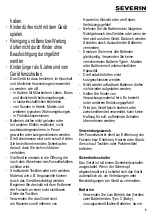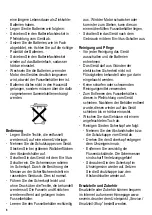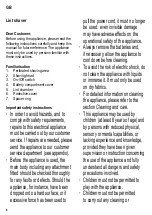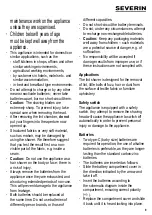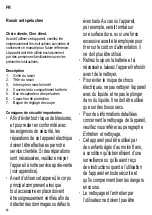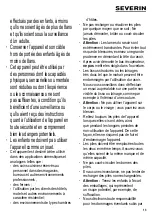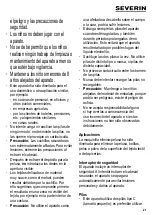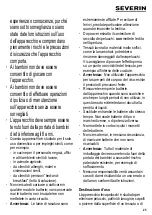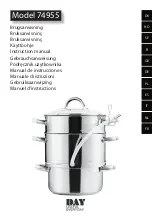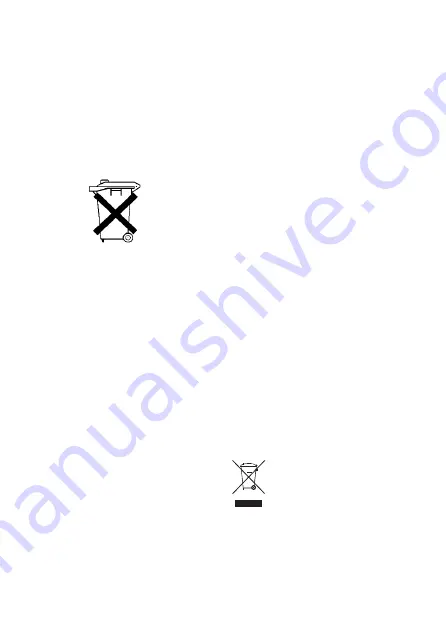
10
∙
When the lint chamber is empty, a
signi
fi
cant decrease in operating speed
is a clear indication that the batteries
are exhausted, and that they should be
replaced.
∙
Never dispose of old batteries in your
domestic garbage. Old batteries must be
disposed of through local ‘special garbage
collection points’.
Operation
∙
Place the item to be treated on a level
surface.
∙
Remove the protective cover from the
head. For coarser wool surfaces, the use
of the spacer ring is recommended.
∙
Use the On-/Off switch to turn the
appliance on. The shaving blades inside
the shaving head start rotating. When
they come into contact with the surface of
the area to be treated, a distinct noise can
be heard. This is normal.
∙
Guide the shaving head gently and
without exerting any pressure over the
fabric to be treated. Lint and fuzz balls
are removed and collected in the lint
chamber.
∙
The chamber should always be emptied
in good time. If the motor seems to lose
power, or if it stops working completely,
the lint chamber may be over-full.
∙
Turn the appliance off after use.
Cl eaning and care
∙
Before cleaning the appliance, turn the
motor off and remove the batteries from
the battery compartment.
∙
To avoid the risk of electric shock, do
not clean the appliance with liquids or
immerse it.
∙
Do not use abrasives or harsh cleaning
solutions.
∙
To empty the lint chamber, slide it out of
the appliance in the direction indicated
by the arrow. Once emptied, slide the
chamber back into the appliance until it is
heard locking into place.
∙
The exterior housing may be wiped with a
slightly damp soft cloth.
∙
The shaving head can be cleaned as
follows:
∙
Remove the spacer ring and the
protective cover from the appliance.
∙
Take off the shaving head by
unscrewing it in an anti-clockwise
direction.
∙
Caution:
Exercise extreme caution
when removing the lint residues. The
blades are very sharp, and there is a
risk of injury.
∙
Replace the head back on the appliance
and turn it clockwise to secure. Replace
the protective cover and – if applicable
– the spacer ring.
Disposal
Devices marked with this symbol
must be disposed of separately
from your household waste, as
they contain valuable materials
which can be recycled. Proper disposal
protects the environment and human health.
Your local authority or retailer can provide
information on the matter.
Summary of Contents for CS 7976 -
Page 3: ...3 1 3 4 5 2 6 7...
Page 44: ...44 1 2 3 4 5 6 7 8 GR...
Page 45: ...45 8...
Page 46: ...46 C...
Page 47: ...47...
Page 48: ...48 1 2 3 4 5 6 7 RU...
Page 49: ...49 8 8...
Page 50: ...50...
Page 51: ...51 Severin 2 a x...
Page 52: ...52...





